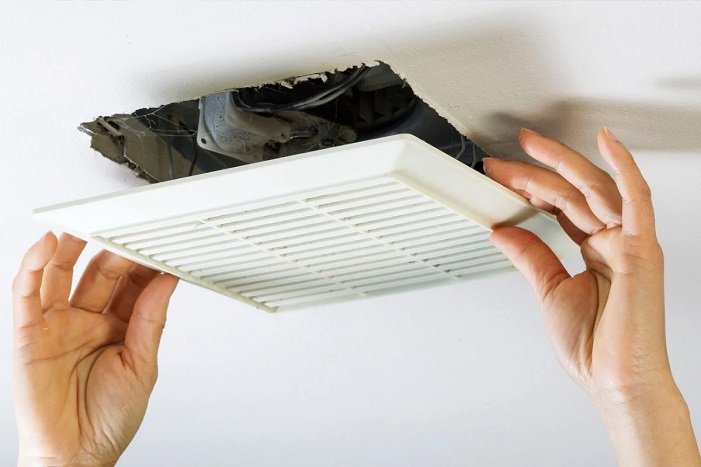Introduction
Ventilation fans play a fundamental role in maintaining optimal indoor air quality and comfort levels. Their significance lies in their ability to circulate air expelling stale air laden with pollutants and bringing in fresh, clean air from outside. By continuously exchanging air, ventilation fans help remove moisture, odors, and airborne contaminants, thereby creating a healthier living environment. Additionally, they assist in regulating temperature and humidity levels, preventing the buildup of mold and mildew which can adversely affect health and comfort. Improved indoor air quality enhances the overall well-being of occupants but also contributes to increased productivity and concentration levels. Ultimately, ventilation fans are needed to ensure a breathable, pleasant indoor atmosphere conducive to health and comfort.
Understanding Ventilation Fans
-
Types of ventilation fans
Ventilation fans encompass a range of types designed for specific purposes, from centrifugal fans efficiently moving air through ducts to axial fans creating airflow along their rotation axis. Inline fans, mixed-flow fans, exhaust fans, and attic fans fulfill distinct roles, collectively contributing to enhanced indoor air quality and comfort.
-
How ventilation fans operate
Ventilation fans work by expelling stale air from a room while immediately bringing fresh air from outside. This process is driven by a motor that rotates blades, creating airflow that helps maintain better indoor air quality and comfort.
-
Common components and mechanisms
Ventilation fans comprise fan blades, a motor, housing, and controls, working together to circulate air effectively. The fan blades draw air in and expel it outward, powered by the motor which is encased in the housing for stability. Controls regulate the fan’s speed and operation, while additional features like grilles or louvers ensure efficient airflow and prevent debris entry.
Importance of Ventilation Fan Care
-
Ensuring optimal performance
Regular maintenance and monitoring are vital for ensuring the optimal performance of an industrial ventilation fan. Industrial ventilation solutions play a crucial role in addressing common fan problems, such as airflow obstruction and wear and tear. These solutions include cleaning the fan blades and housing, inspecting for damage, lubricating moving parts, and monitoring airflow and fan speed. By implementing these measures industrial ventilation systems can maintain efficiency, safety, and indoor air quality.
-
Preventing breakdowns and malfunctions
Regular inspection and maintenance of ventilation fans are essential for preventing breakdowns and malfunctions, and ensuring optimal air quality and safety. Implementing preventive maintenance schedules and educating users on proper usage can help prolong the lifespan of ventilation systems and minimize the risk of unexpected issues.
-
Improving energy efficiency
Proper care of ventilation fans is essential for improving energy efficiency by ensuring optimal air circulation and pollutant removal. Neglecting fan maintenance can lead to decreased performance and increased energy consumption. Regular cleaning, part replacement, and investment in energy-efficient models are key to maximizing energy savings and promoting a healthier indoor environment.
Tips for Ventilation Fan Maintenance
-
Regular cleaning procedures
Regular cleaning of ventilation fans involves switching off the power, removing the cover, and using a soft brush or vacuum to remove dust and debris. Paying attention to the motor housing and bearings, followed by reassembly after thorough drying, ensures optimal airflow and prevents potential hazards.
-
Inspection and lubrication of moving parts
Regular inspection and lubrication of the moving parts of a ventilation fan are vital for optimal performance. During inspection, components such as fan blades, motors, and bearings should be carefully checked for wear and debris accumulation. Proper lubrication reduces friction, extending the fan’s lifespan and ensuring efficient operation.
-
Replacing worn-out components
When the components of a ventilation fan begin to wear out, timely replacement is essential for maintaining optimal air quality and efficiency. Each part, from the motor to the blades and bearings, plays a crucial role in the fan’s performance. Regular inspections help identify worn-out components, allowing for prompt replacement to prevent potential hazards and discomfort from inadequate ventilation. Proactive maintenance extends the lifespan of the ventilation system and reduces the risk of unexpected breakdowns, saving both time and money in the long term.
Conclusion
Proper care of ventilation fans is fundamental for maintaining good indoor air quality and comfort in any space. These fans play a vital role in removing stale air, moisture, and pollutants, thus preventing the buildup of harmful substances and improving overall air circulation. Regular maintenance practices such as cleaning fan blades, checking for any obstructions, and ensuring the proper functioning of motors are essential to ensure optimal performance. By prioritizing fan care, individuals can prolong the lifespan of their ventilation systems and minimize the risk of potential issues such as mold growth or poor air circulation. Ultimately, investing time and effort in ventilation fan maintenance contributes to a healthier indoor environment and enhances the overall comfort and well-being of occupants.

